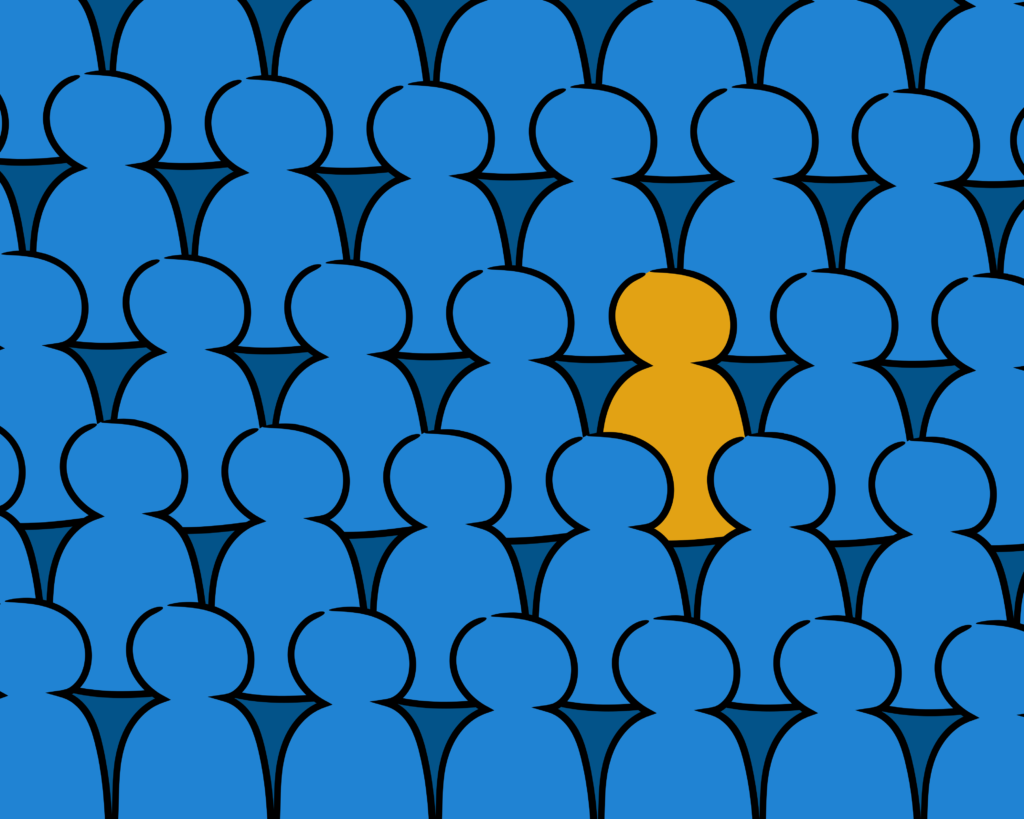AI, much like the many other disruptive technologies of the past, is evolving at a dizzying pace. In the past year or so, AI has gone from an elusive technology mostly working behind the scenes to the forefront of our professional and personal lives, its influence stretching across industries and dominating conversations. Every day, it seems, new types of AI models emerge, an innovation pushes the boundaries, and we collectively redefine what’s possible. This constant evolution has led to a flood of new terminology, like “generative AI”, “predictive AI”, “supervised learning”, “unsupervised learning”, and “deep learning.”
In this blog, we aim to untangle the AI jargon and demystify the hype. Additionally, we’ll introduce a new kid on the block, “comparative AI,” and how its narrow-use, supervised technology could transform the way recruiters work.
How AI Learns What It Needs to Do
In order to understand the “what” of AI, we should first define the “how” — the tools and techniques used to build AI models, how they learn to do their task in the first place. The three main techniques are supervised learning, unsupervised learning, and deep learning. Each method has its own strengths and weaknesses, and the best method depends on the program’s intended functionality and what the AI model is designed to learn.
Supervised Learning AI Models
This refers to a broad category of AI models that learn from labeled data, where each input has a corresponding desired output. Think of it like having a teacher (programmer/prompt) who guides the student (the AI) through its learning journey. Say the student is learning a new language, and the teacher is showing flashcards with pictures and their corresponding word.
- Input – This is the picture on the card, representing the information the AI model receives. It could be text, images, numbers, or any other type of data.
- Output – This is the word on the card, representing the desired outcome the model should learn to predict or achieve. In supervised learning, these outputs are already labeled, like the answer on the back of a flashcard.
Unsupervised Learning AI Models
This category refers to AI models that learn from unlabeled data, finding patterns and relationships on their own without predetermined outputs. Imagine being unfortunate enough to find yourself alone in an uncharted jungle, surrounded by exotic, undocumented flora and fauna. Your goal is to try to understand and find patterns in the ecosystem by observing the interactions and behaviors of its wildlife, without a pre-defined “right” answer.
- Input – This is the unlabeled data, – text documents, images, customer purchase records, etc. There’s no specific “question” or desired outcome associated with each data point.
- Output – Instead of identifying a specific answer, the product aims to identify hidden patterns and relationships within the data. This could involve:
-
- Clustering: Grouping similar data points together, like recognizing different animal species based on their characteristics.
- Dimensionality reduction: Simplifying complex data by identifying its most important features, like grouping areas of the jungle by dominant tree species, topography, etc.
- Anomaly detection: Finding data points that stand out from the rest, like spotting unusual animal behavior that might indicate illness.
Deep Learning AI Models
The key difference between deep learning and unsupervised learning is this: unsupervised learning models aim to discover patterns within data, whereas deep learning models aim to predict outcomes based on learned patterns within data. Deep learning models are a specific type of architecture inspired by the human brain, with layers of interconnected “neurons” learning from data.
- Input – Raw data like text documents, images, sensor readings, or any other digital representation of information. It can be vast and complex, with millions of data points. Deep learning models typically work with data that has some inherent structure.
- Output – The most common output is prediction, where the model uses its learned knowledge to make a prediction about future events or unseen data. For example, it could predict the sentiment of a text, recognize an object in an image, or recommend a product you might like.
Types of AI Explained: Generative, Predictive, and Comparative AI
The product of the above training models will typically fall into one of three buckets or a combination of them: generative AI, predictive AI, and comparative AI.
Predictive AI
The function of predictive AI is to forecast future events or trends based on historical data and patterns. It does this by analyzing data representing past events, trends, or behavior and generating outcome predictions.
- Examples: Predicting customer churn, recommending products, forecasting market trends, and weather forecasting.
- Strengths: Can identify subtle patterns and correlations in massive datasets, enabling quick decision-making.
- Challenges: Requires high-quality historical data and can be susceptible to bias, resulting in potential prediction inaccuracy.
Generative AI
Generative AI creates new, original data that resembles existing data, like text, images, or code. To achieve this, it’s prompted by data that represents the style, format, or characteristics of the desired outcome.
- Examples: Generating realistic images, composing music, writing creative text, simulating complex systems or creating realistic datasets for research purposes. ChatGPT is the most popular real-world example of generative AI.
- Strengths: Can automate content creation, personalize user experiences, and fuel creativity and innovation.
- Challenges: Raises ethical concerns about authenticity and ownership, requires careful training and monitoring, and can generate biased content or misinformation.
Comparative AI
Comparative AI is relatively new and might be unfamiliar to you. Comparative AI pulls numerous data points from different sources and compares and analyzes them to identify similarities, differences, and relationships.
- Example: Fastr.ai is pioneering the comparative AI space, analyzing the relationship between candidate profiles and open job requirements, then providing suggestions for recruiters to choose from. The suggestions provided to recruiters are contextual and unique for each open job/candidate, a candidate may be a strong fit for one role and less so for another.
- Strengths: The traditional ways of talent acquisition involve manually reviewing resumes one-by-one, comparing each candidate with the others to identify who to prioritize. Fastr.ai’s comparative AI automates that process, while the final decision always remains in the hands of recruiters.
- Challenges: Comparative AI requires well-defined criteria for comparison and can be sensitive to data format and representation.
Introducing Fastr.ai’s Narrow-use Comparative AI
Fastr.ai is designed to revolutionize talent acquisition with a focus on safety, fairness, and personalized recommendations. While other AI solutions might delve into generative tasks like creating resumes or predicting future trends, our Comparative AI takes a distinct, more targeted approach:
Focused and Supervised: Unlike broader AI applications, ours is narrowly focused on comparing candidate profiles against specific job requirements and company culture. This supervised learning approach ensures transparency and control, allowing you to clearly understand the factors influencing our suggestions.
Contextual and Individualized: We know every hire is unique. Our AI analyzes each candidate within the context of a specific role, company values, and even team dynamics. This mitigates bias by avoiding generic comparisons and prioritizing individual qualifications and cultural fit.
Suggests, Not Dictates: We believe in empowering, not replacing, human input and judgement. Our AI suggests suitable candidates, highlighting their strengths and potential value, but the final decision remains firmly in human hands. This collaborative approach ensures a human-centric hiring process that leverages AI insights as an efficiency tool without sacrificing control.
Combating Bias: We understand the concerns surrounding AI bias, and we actively address them. Our platform undergoes rigorous bias detection and mitigation processes, and we continuously refine our algorithms to ensure fairness and equal opportunity for all candidates. Additionally, we offer a feature that anonymizes demographic data within candidate profiles, lessening the possibility of unconscious bias when reviewing suggestions.
The Future of Recruiting: Why Comparative AI Matters
With globalization, remote work, and the rise of the gig economy, businesses need to employ agile, efficient, and unbiased hiring practices. Traditional methods are struggling to keep pace, leaving companies overwhelmed and candidates frustrated.
This is where Comparative AI emerges as a transformative force. Our Comparative AI focuses solely on understanding and comparing candidate profiles against specific job requirements and company culture, automating repetitive tasks like manual resume screening and candidate matching and enabling recruiters to focus on high-impact interactions.
Schedule a demo of Fastr.ai today and take our Comparative AI for a spin to see how we prioritize transparency and fairness while helping recruiters build stronger teams in half the time.







